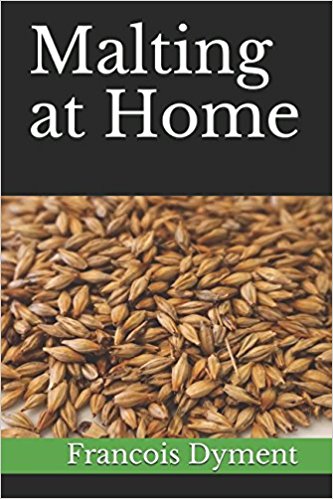Monthly Archives: September 2018
Rye Malt
10 lbs Rye at 12.6% moisture steeped to 42%
Steeped 8 hrs + 8 hr air rest + another 4 hr steep (target steep weight 15 lbs) 12° C (53.6°F).
Germinated at 16° C (60.8°F ) for 6 days 1 additional day at 21° C (69.8 ° F). Acrospires 1/2 length of grain.
Kilning for Pale:
24 hrs 37-43° C (98.6-109.4° F) (malt temperature)
8 hrs. at 60° C (140° F)
1 hr. 175° F (79.4° C)
1 hr. 180° F (82.2° C)
2 hrs. 185° F (85° C)
Caramel :
1 lb. green malt stewed at 158° F (70° C) (malt temp) for 2 hr (recommend 3 hrs)
Cover removed 2 hrs. at 200° F (93.3° C) to dry.
30 min. at 250° F (121° C)
Chocolate: Pale malt roasted at 400° F (204.4° C) for 40 min.
Brewing:
1 hr at 109° F (42.8° C) pH adjusted with acid malt to 5.1 – Recommend 2 hrs.
45 min. at 150° F (65.6° C) pH adjusted to 5.3
Pre-boil grav. 1.037
O.G. 1.045
F.G. 1.0079
A.B.V. 4.78 %


